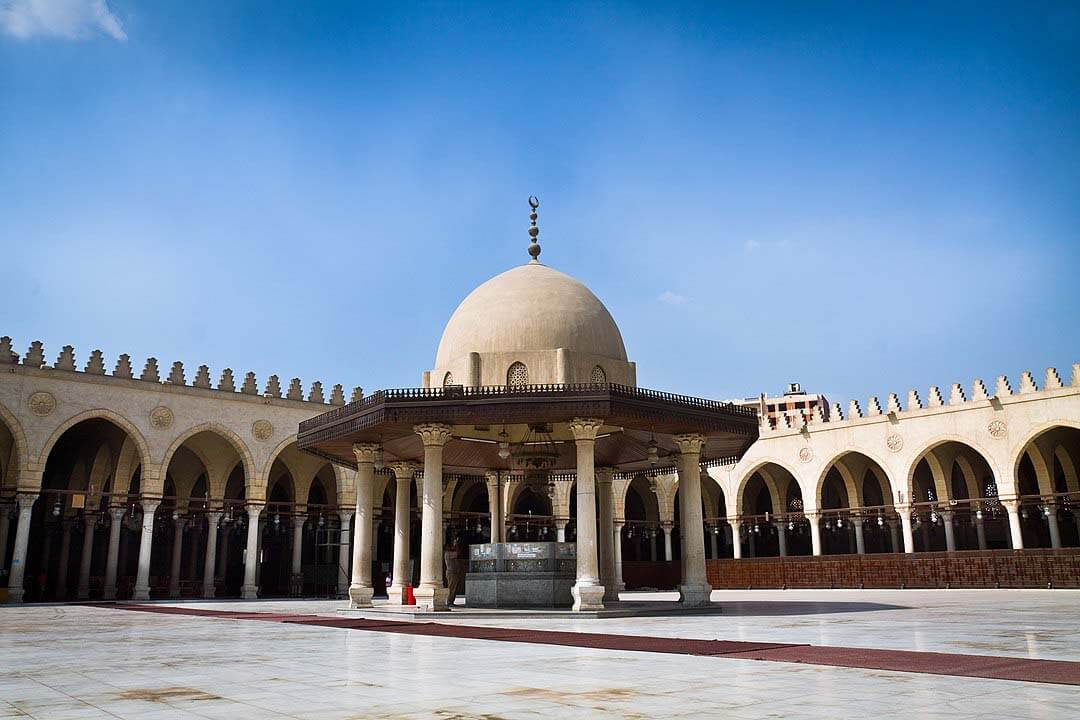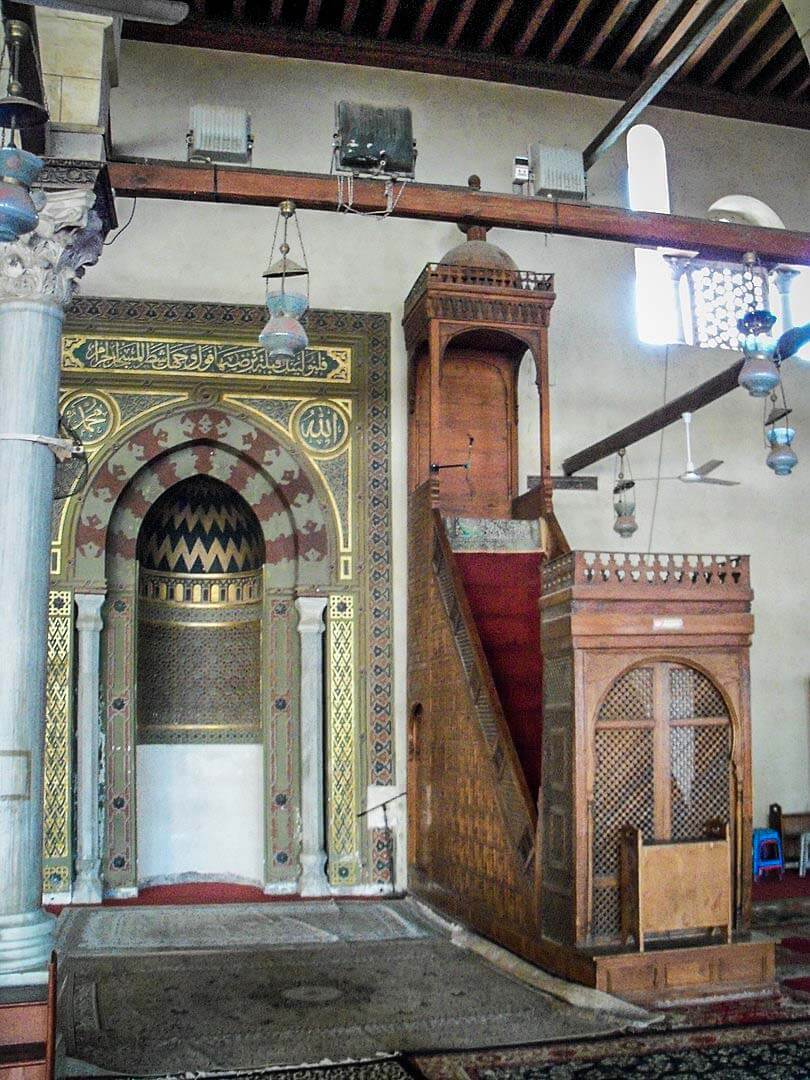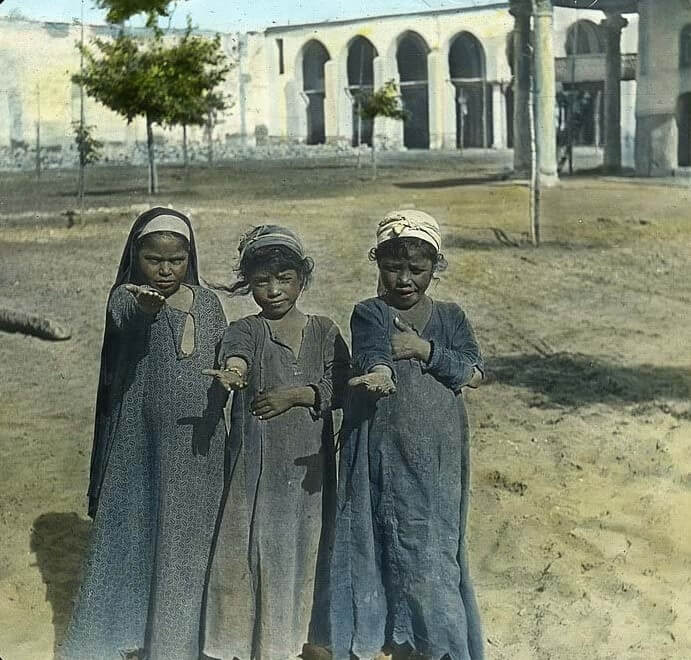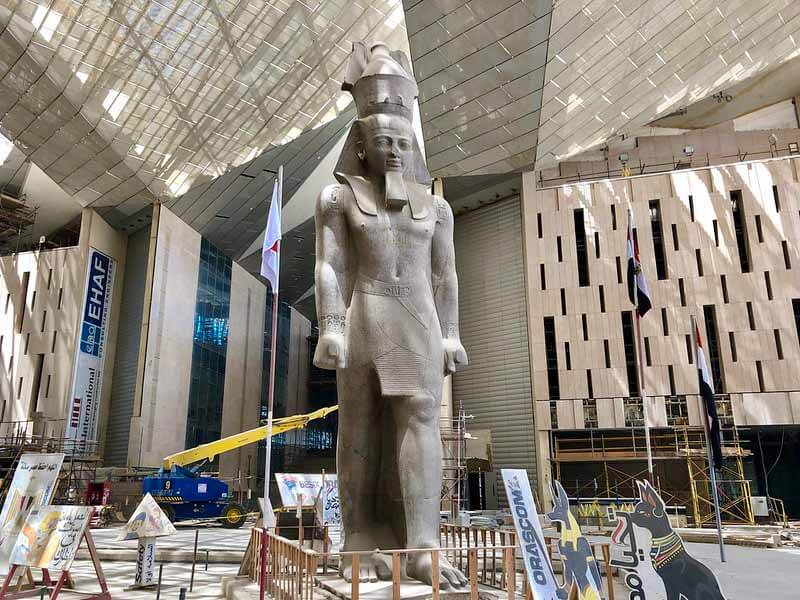Cairo, Egypt
Coordinates: 30.010139, 31.233161
The Mosque of Hz. Amr ibn al-As رضي الله عنه was originally built in 641–642 AD, as the center of the newly founded capital of Egypt, Fustat.
The original structure of the mosque was the first mosque ever built in Egypt and the whole of Africa.
The location for the mosque was the site of the tent of the commander of the Muslim army, general Hz. Amr ibn al-As رضي الله عنه.
One corner of the mosque contains the tomb of his son, Hz. Abd Allah ibn Amr ibn al-‘As رضي الله عنه
For 600 years, the mosque was also an important center of Islamic learning until Al-Muizz’s Al-Azhar Mosque in Islamic Cairo replaced it.
Through the twentieth century, it was the fourth largest mosque in the Islamic world.
Due to extensive reconstruction over the centuries nothing of the original building remains, but the rebuilt Mosque is a prominent landmark and can be seen in what today is known as Old Cairo.
The only part of the mosque’s older structure which can still be seen are some of the architraves, which can be viewed along the southern wall of the Mosque. These were probably added during reconstruction in 827.
Many names
The Mosque is also called Taj al-Jawame (Crown of Mosques), or Masjid Ahl ar-Rayah (Mosque of the Banner Bearers), or Jame’ al-Ateeq (the Old Mosque)
How the location was chosen
According to tradition, the original location was chosen by a bird.
Hz. Amr ibn al-As رضي الله عنه, by order of Caliph رضي الله عنه, was the Arab general that conquered Egypt from the Romans.
In 641, before he and his army attacked their capital city of Alexandria (at the northwestern part of the Nile river delta), Hz. Amr رضي الله عنه had set up his tent on the eastern side of the Nile, at the southern part of the delta.
As the story is told, shortly before Hz. Amr رضي الله عنه set off to battle, a dove laid an egg in his tent. When Hz. Amr رضي الله عنه returned victorious, he needed to choose a site for a new capital city, since Hz. Umar رضي الله عنه had decreed that it could not be in far-away Alexandria.
So Hz. Umar رضي الله عنه declared the site of the dove’s egg sacred, and made it the center of his new city,
Fustat, or Misr al-Fustat, “City of the Tents”. Later, the Mosque of Hz. Amr ibn al-As رضي الله عنه was built on the same location.
Know This
At the time of visiting the mosque women need to cover their heads; arms and legs and all visitors will need to leave their shoes prior to entering the mosque.
The mosque is an active place of worship, as such, the mosque is not open to visitors during prayer times and on holy days.




















